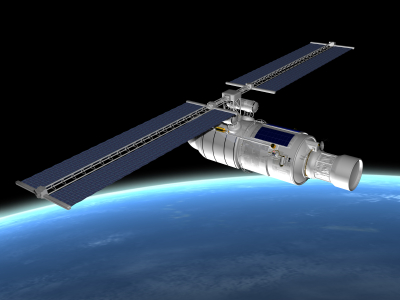Bridging the Broadband Digital Divide with Satellite

As the world undergoes a digital transformation, broadband is the enabler. Today, we are connected in ways that we would never have dreamed of just ten years ago. Broadband has literally changed the way we live and work, taking communications to a completely new level. Whether fixed or mobile, broadband has had a profound effect on every region of the world that it has touched and is bringing about socioeconomic development that can actually be measured. While Information and Communications Technologies (ICTs) are changing lives and accelerating positive changes, these services are more easily accessed in towns and cities, where the population density is higher and investment is more readily available. For many people, broadband access is not easily—if at all—accessible.
In fact, in 2018, only 55.1 percent of the world’s population had access to the Internet. And although many of us consider the Internet to be a part of our daily lives, just under half of us do not have access and therefore cannot reap the benefits it brings. There is, however, a solution that can deliver broadband to even the most remote places on Earth, yet it is often overlooked: satellite connectivity.
Why satellite?
Simply put, the answer is that satellite can be deployed anywhere. As long as the satellite terminal has a clear line of sight with the satellite it is communicating with, it can be installed anywhere, providing rapid access to connectivity. But satellite has been misunderstood in the past. It has been dismissed or passed over as a solution for many reasons: for being too expensive, because signal latency is too much of an issue, and because it is not a sustainable solution for the delivery of high-speed connectivity. These reasons, however, could not be further from the truth. Satellite is proving itself to be an indispensable part of any communications technology. Its ability to reach literally anywhere, regardless of geographic barriers, renders it unique—and now this technology is taking another leap forward.
The emergence of High Throughput Satellites (HTS) is changing the capabilities of the satellite industry, offering more power and more throughput at a lower price-per-bit. HTS also offer flexibility and reliability for a host of markets and services. HTS manage this by utilizing spot beam technology that operates in Ka and Ku-band, where there is more available capacity. HTS are now offered by most satellite operators—or most have them planned—and they are transforming the economics of satellite-based connectivity.
The other significant development occurring in the satellite industry at the moment is the inexorable rise of the small satellite. Formerly associated solely with the scientific and academic community, small satellites are now becoming part of the mainstream satellite industry. The last five years in particular have seen huge strides forward in small satellite technology and capabilities. Today, satellites with a mass of less than 500kg (known as smallsats) can achieve missions that were previously the domain of heavier satellites. The developments in sensor technology and the fact that smallsats can meet the requirements of a wide range of applications, including broadband communications, mean that operators can now have much smaller satellites built, which brings down manufacturing and launch costs. This development also opens up the opportunity to refresh technology regularly, thus enabling them to remain more competitive. These smallsats are moving into commercial deployment and some will become operational as soon as next year in the form of ‘mega’ constellations.





















